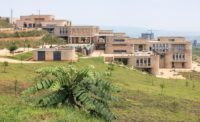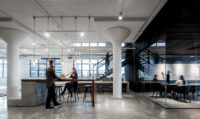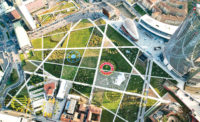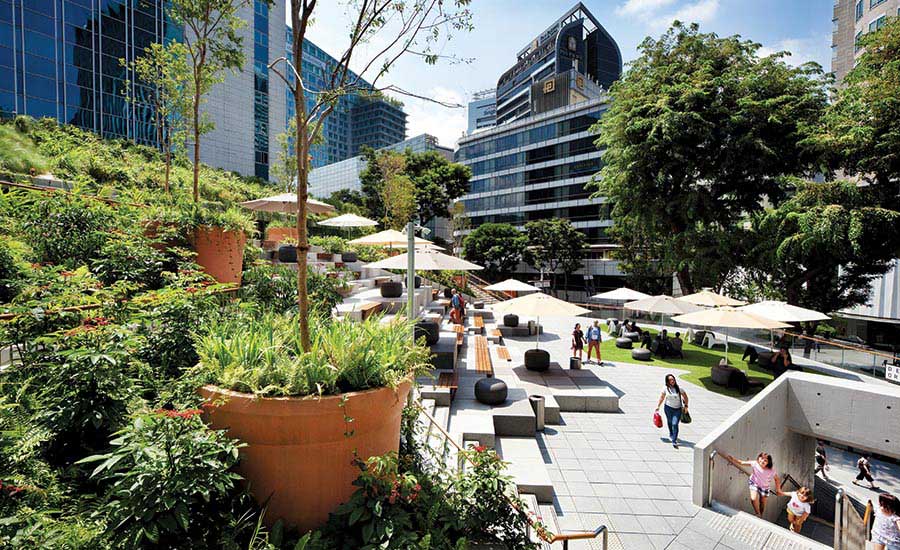Design Orchard by WOHA
Singapore

Prominently located on Orchard Road, Singapore’s famed shopping corridor, Design Orchard provides coworking and retail spaces for local artists and designers.
Photo © Patrick Bingham-Hall

Its tiered rooftop serves both as recreational space for the general public and a venue for entertainment events.
Photo © Patrick Bingham-Hall

Abundant flora on the roof optimizes the thermal performance of the concrete structure’s interior.
Photo © Darren Soh



Architects & Firms
According to Wong Mun Summ, a founding director of Singapore-based WOHA, the firm’s latest project, Design Orchard—a 25,300-square-foot building with coworking and retail spaces that showcase local artists and designers—is a “quick fix.” Commissioned by a joint venture that includes the Singapore Tourism Board and the Textile and Fashion Federation Singapore, it is intended to last only 15 years while long-term plans to develop a greener, more pedestrian-friendly design district are rolled out.
The three-story reinforced-concrete building is located on a formerly empty corner site along Orchard Road, the city’s major shopping boulevard. Because the building required adaptable areas for pop-ups and incubator spaces, the architects had to make the design flexible. But while the future of the building and its program are uncertain, “the one thing we were quite sure about was that we had to design an interesting and usable public space that could be accessed from Orchard Road itself,” says Wong.
To do this, the architects set back each of the upper two floors, creating an open amphitheater, with tiered seating and steps that lead up to a luxuriant garden at the top. “The building is meant to facilitate Singaporean design, particularly fashion,” the architect explains, “so we thought about how there could be fashion shows and other types of entertainment events on the rooftop.” It was also important to create a seamless transition from the street to the roof. A stair is visibly placed at the building’s entrance, so “it’s very clear how you get up there,” says Wong. “You could literally have a fashion show starting on the third floor and coming down and out to Orchard Road.”
The Design Orchard rooftop is both a venue and a lush respite from the crowded urban streets below, providing shade and seating. As in most of WOHA’s projects, abundant flora, fluidly integrated with the building, is the most striking element. The concrete structure worked to the architects’ advantage because “we wanted it to be a gray space,” says Wong, “so that the landscaping becomes the content, and the building is the backdrop.” In addition to its rejuvenating qualities, the sloping green roof also optimizes the thermal performance of the interior.
As Wong puts it, the project is part of Singapore’s effort to “keep up with the times” and to reimagine the popular shopping area as a recreational destination. Completed at the beginning of the year, it is already activating the streetscape while the city continues to study how its vision will unfold. “Hopefully, it can be a model for what can be done on a larger scale,” says the architect.










